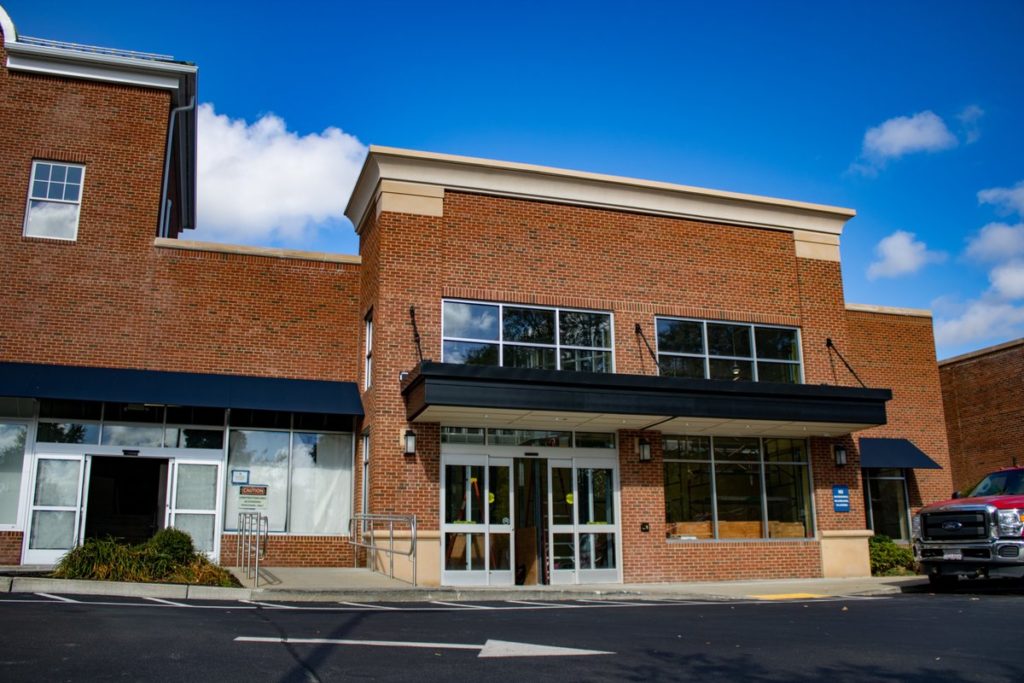Photo: Descrepancies in an Excel spreadsheet caused Belmont schools to go remote this week
A critical report used to determine the safety of Belmont school buildings to reopen during the coronavirus pandemic was revealed this week to be riddled with miscalculations forcing the School District to shut down in-school hybrid learning for kindergarteners and elementary students and delay the start of the hybrid model for middle and high school students.
According to an email after the Tuesday, Oct. 20 School Committee meeting, Belmont Superintendent John Phelan announced that grades “PreK to 12 will remain home and pivot back to remote learning on Wednesday, Oct. 21 through Friday, Oct 23.”
During the three-day closure, the town’s Facilities Department will be “reallocating and reprogramming” as well as increasing the number of air exchange equipment so rooms will meet the minimum air flow standards set by the Harvard T.H. Chan School of Public Health to allow learning to safely take place, said Phelan.
Phelan said he will issue a progress report to the community at noon, Friday, Oct. 23. “We do not anticipate this pivot to remote learning will be extended past this week,” said Phelan.
The closure of Belmont schools has delayed the start of hybrid classes at the Chenery Middle School that was scheduled to start on Oct. 22. The start of the hybrid model for Belmont High School has been halted indefinately due to a vote of the School Committee later in the meeting.
Early in the summer when standards were being discussed during the creation of the four phased , air exchange was one of the pillars of the safety protocal – along with community level of COVID-19 infection determined by state data – the district would use to determine when to move from remote learning to hybrid and finally in-class instruction.
Initial airflow data collected and calculated in September by Bala Consulting Engineers – hired this summer to inform the Belmont School District on the air exchange rate in the district’s six school buildings – found that the majority of rooms had passed the standards set by the Chan School and guidelines from the state’s Department of Elementary and Secondary Education.
Steven Dorrance, director of facilities in Belmont, said Bala was hired by Belmont “on a rather urgent basis” in August when they were asked to produce air exchange assessments “under a very, very short time frame.”
An explanation of air exchange rate and how to calculate it from the Harvard T. H. Chan School can be found here.
With preliminary data in hand “which we believed in good faith was representative, accurate and through,” the decision was made to move forward in placing students in classrooms which were equiped with “wonderful air purification technology.”
But when a more detailed data report was released this week and reveiwed by school principals and the town, “we had some surprises,” said Dorrance, noting “discrepancies” between the first and second groups of figures.
Keith Parta, the mechanical department manager in Bala’s Boston office, acknowledged there were differences between the two data sets. Digging deeper into the numbers, Parta discovered there was a “cell problem in the Excel” referring to the Microsoft spreadsheet software, “and it was entirely on us.”
While calculating the air exchange rate is fairly easy to do – there are online air change calculators – Parta said the error resulted during the process of “layering in additional mitigation strategies” into the data cells. Those mitigation actions included changes to the air flow rate by, for example, opening a window three inches. This required introducing a multiplier to the data cell to calculate the new rate.
“I don’t believe we got the multiplier correct for the windows,” said Parta. With layers of incorrect mitigation data, the calculation for the number of fan filters required for each room to generate the correct air flow was flawed.
“It’s very easy for even a seasoned veteran to … look at [a spreadsheet] and say ‘hey, this data set looks consistant but upon further review you have to say to yourself with that inner voice … something is wrong here,” said Parta.
The error likely occurred during what Parta called his firm’s “mad dash” as it was conducting testing at 62 school districts during August. Just in analyzing the Belmont district, “there are hundreds if not thousands of cells” that need to be inputed.
In addition, Parta said a “major misstep” was what he discribed as neglecting to perform a “scrub” in which Bala and the town would review seperately the results before meeting for a combined appraisal of the data.
Saying that he has made a 1,000 mistakes in his lifetime, “the more important thing is that we catch [the mistake], we fix it and we move on because that is the only way we can proceed,” Parta said.
The result of the new data is “there are some rooms that clearly have to come offline because we really don’t have any incoming or free air to work with,” said Dorrance, with other rooms that will need to be “flagged” such as “tiny” interior rooms with just one door to obtain pass through air.
Andrea Prestwich, the school committee’s chair, noted that those newly identified rooms are not classrooms or spaces that children are taught.
Because there continues to be “some concerns about the report” the third district-wide analysis will be conducted over the three day shut down. Parta said there should be only minor improvements with the third reports over that of the second. Dorrance said the town’s confidence level in the coming “final” report will be at “110 percent” when it is released in a subsequant meeting.
“As we move through this process to continue to provide a safe environment for all students and staff, we thank you for patience for this unexpected schedule change. We understand the impact these changes have on families, work schedules, and childcare, and we regret the inconvenience,” said Phelan.

